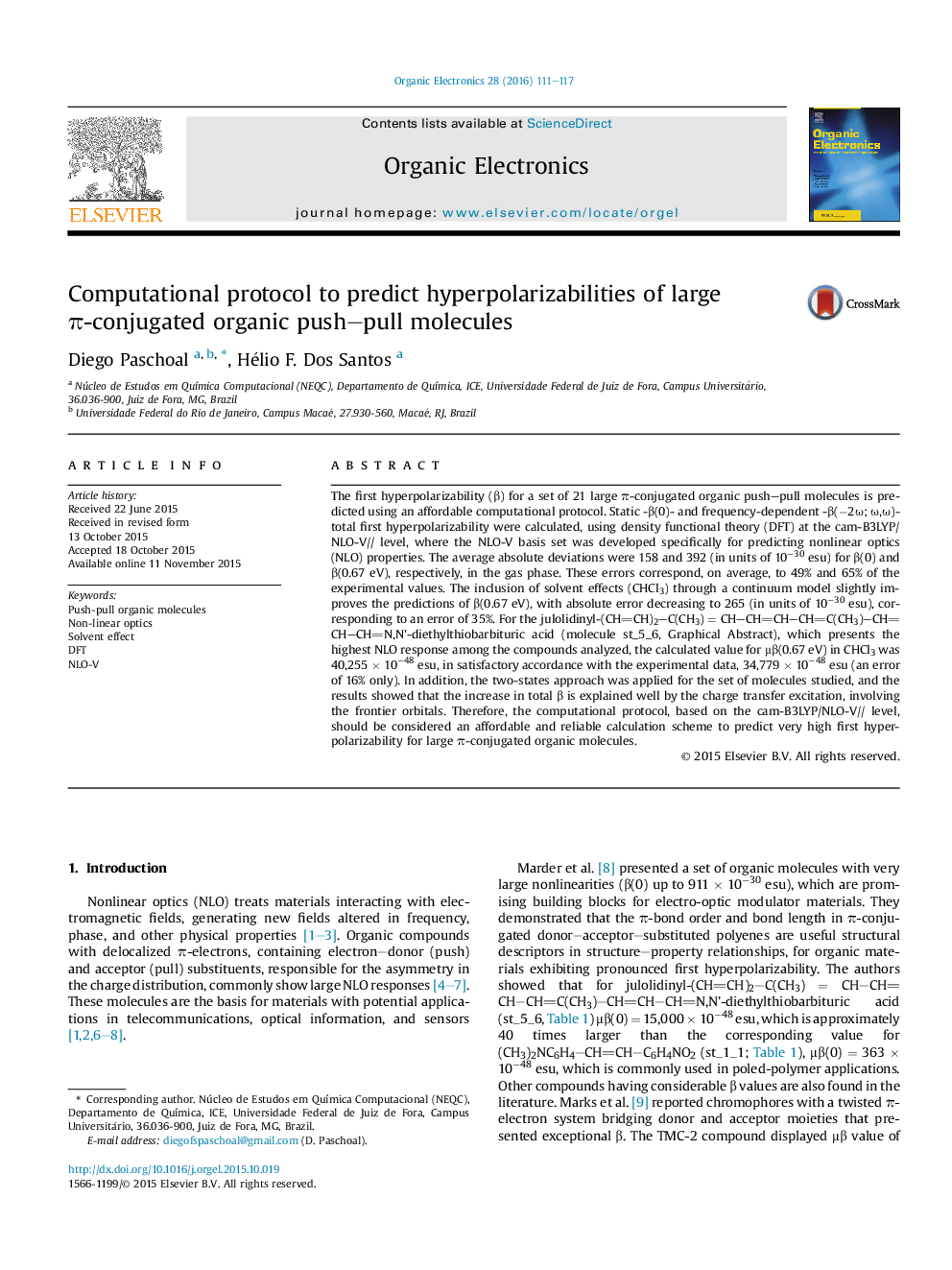| Article ID | Journal | Published Year | Pages | File Type |
|---|---|---|---|---|
| 1267121 | Organic Electronics | 2016 | 7 Pages |
•We calculate hyperpolarizability of large π-conjugated organic push–pull molecules.•Static β(0) and frequency-dependent β(−2ω; ω,ω) hyperpolarizability were calculated.•The inclusion of solvent effects (CHCl3) improves the predictions of β(−2ω; ω,ω).•βCT was calculated using the two-states approach.•The cam-B3LYP/NLO-V//level shown a reliable calculation scheme to predict β.
The first hyperpolarizability (β) for a set of 21 large π-conjugated organic push–pull molecules is predicted using an affordable computational protocol. Static -β(0)- and frequency-dependent -β(−2ω; ω,ω)- total first hyperpolarizability were calculated, using density functional theory (DFT) at the cam-B3LYP/NLO-V// level, where the NLO-V basis set was developed specifically for predicting nonlinear optics (NLO) properties. The average absolute deviations were 158 and 392 (in units of 10−30 esu) for β(0) and β(0.67 eV), respectively, in the gas phase. These errors correspond, on average, to 49% and 65% of the experimental values. The inclusion of solvent effects (CHCl3) through a continuum model slightly improves the predictions of β(0.67 eV), with absolute error decreasing to 265 (in units of 10−30 esu), corresponding to an error of 35%. For the julolidinyl-(CHCH)2–C(CH3) = CH–CHCH–CHC(CH3)–CHCH–CHN,N'-diethylthiobarbituric acid (molecule st_5_6, Graphical Abstract), which presents the highest NLO response among the compounds analyzed, the calculated value for μβ(0.67 eV) in CHCl3 was 40,255 × 10−48 esu, in satisfactory accordance with the experimental data, 34,779 × 10−48 esu (an error of 16% only). In addition, the two-states approach was applied for the set of molecules studied, and the results showed that the increase in total β is explained well by the charge transfer excitation, involving the frontier orbitals. Therefore, the computational protocol, based on the cam-B3LYP/NLO-V// level, should be considered an affordable and reliable calculation scheme to predict very high first hyperpolarizability for large π-conjugated organic molecules.
Graphical abstractFrequency-dependent μβ(−2ω; ω,ω) calculated at cam-B3LYP/NLO-V//level in CHCl3 for the studied molecules. Experimental values obtained from EFISH experiment. The error in experimental measurements was estimated to be ±20% [8] and is indicated as error bars. The frequency-dependent results (experimental [8] and calculated) were performed at 1907 nm (0.67 eV) of fundamental radiation.Figure optionsDownload full-size imageDownload as PowerPoint slide
